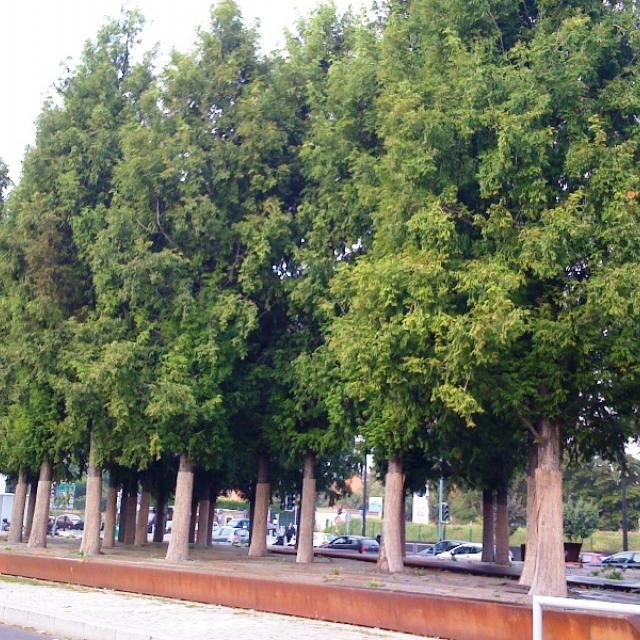Since 2008, 25-metre Metasequoia trees have adorned the Vache Noire roundabout. Irrigation scheduling is particularly tricky in this polluted urban environment. Mr. Raveraud, from the company G2E IDFA, at the time opted for a root watering system. Irrigation scheduling has been accomplished by GSM-GPRS with the use of tensiometers for soil moisture monitoring.

Ever since the roundabout was first brought into service in 2008, Mr. Raveraud has monitored the water consumption rates of the Metasequoias, comparing this with the consumption levels that would be recorded with a classical irrigation system. The results are truly spectacular!
Irrigation scheduling with the use of tensiometers : The Vache Noire roundabout - Arcueil
Aim:
• To quantify on-site the requirements of a plantation of trees within an urban environment
• Measure the environmental impact of this concept.
Methodology:
• setting up a special substrate: mixture of soil/stone
• supply and plant specific varieties of trees: Metasequoia
• set up a root zone irrigation system
• laying out and paving the whole project area: alleys and corridors of Corten steel and pavements of tilestone
• setting up a GSM/GPRS irrigation?management system
• installing tensiometers for soil?water?monitoring, combined with GPRS technology, at different depths of the rooting zone (4 units/ tree on a cross-section of 7 trees).
Equipment:
• irrigation network in HDPE
• pulse meter, calibrated for 10 litres
• shut-off electro-valve: Master valve
• electric drain valve
• electric delivery valve
• RWS Root Watering System
• surface water delivery: shrubblers
• GSM/GPRS programmer
• computerised data logging via GPS/GPRS of tensiometric readings.
Operational aspect :
• the probes send the soil water status to the server 2 times/week
• the soil water information is processed and converted into a graph format
• the interpretation of the curves on the graph defines the plant’s water requirements
• if necessary, an exact quantity of water is applied, controlled by the pulse meter
• a report is drawn up and sent to the client.
Conclusion
Such a system can apply the precise amount of water to the plants, without any human intervention, the advantages being savings on water, optimum development of the trees, fewer trips to the field required...
